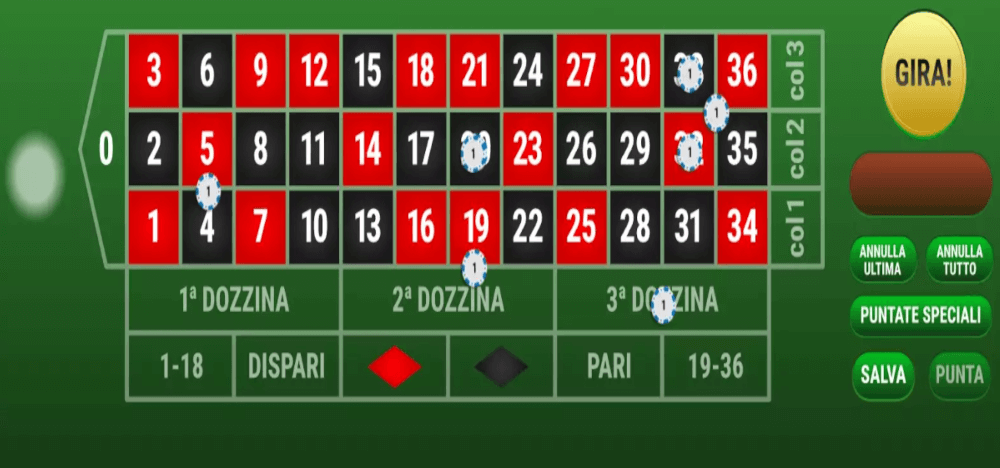French

Using a French roulette system is almost identical to playing European roulette. A French roulette wheel has the same 37 numbered and colored holes as a European roulette wheel. There are 18 black holes, 18 red holes, and one green hole, zero. When the wheel's speed slows, the roulette ball falls into one of the holes along the wheel's edge. However, the French roulette table has a few distinctions. First, there are no black boxes - this is purely a design choice and has no impact on the game. The table now has green squares instead of black, but the green squares still correspond to the black holes on the wheel.
The two special rules that distinguish the French roulette system from the European are "En jail" and "La partage". If the ball lands on zero, you generally lose your stake, but the French regulations allow you to keep it. In Danish, "a jail" means "in prison," and that's exactly what you can do. This implies you keep your bet and carry it to the next round. Thus, it increases your chances of winning and you only lose if the ball hits on zero again. If you win a round later, you only win your first bet, not the new one. “La partage” implies you can split your stake and get half of it back if the ball lands on zero. However, the "La partage" rule only applies to even-money bets, such as red/black and even/odd.
What is French roulette?
In France, the game is called "roulette". Compared to the European version, French roulette may appear complicated at first. First and foremost, French roulette features various French terms on the table, which you must learn before playing. The layout of the different game groups is also different in French roulette, which might be perplexing. The columns are additionally marked with the letters "P", "M", and "D" in the lower right corner, which is unique to French roulette. Premiere, Moyenne, and Derniere (third).
Despite its distinct look, French roulette has the same numbers and a green 0, as does European roulette. What makes French roulette unique and why should one play it? It has two rules: "La Partage" and "A Prison".
If you enjoy roulette games and prefer bets that pay 1:1, such as red or black, even or odd, and high or low, then you will enjoy French roulette - it can improve your long-term profit compared to other varieties.
Partage and En Prison
These two particular rules assist you as a player, reducing the house edge. When you hit the green zero with the ball, ordinarily your wager is lost, but in this variation of roulette, your bet moves on to the next round. It gives you a second chance to win if the ball lands on the green zero again. If you win the bet in the next round, you only win the bet from the first round, where the ball landed on the green zero.
"La Partage" is a different but still favorable rule in the game where you can split your bet and lose half while getting the other half back. In the long run, it will benefit the gamer. This rule only applies to bets that pay 1: 1. Red or black, even or odd, high or low.
Pros and Cons of French roulette
The most evident downside of French roulette is its complexity. At first glimpse. The distinctive design and French words may be challenging at first, but it is easily learned, and the superb technical capabilities for study make it easy to prepare before a game session.
The two biggest advantages in French roulette are unquestionably A Prison and La Partage, which combined make up the biggest difference between French and European roulette, and thankfully it is to the players' benefit. In French roulette, these details improve the payback rate from 97.3 percent to 98.65 percent. The difference between the two games is due to the green zero's ability to win or keep his bets.
